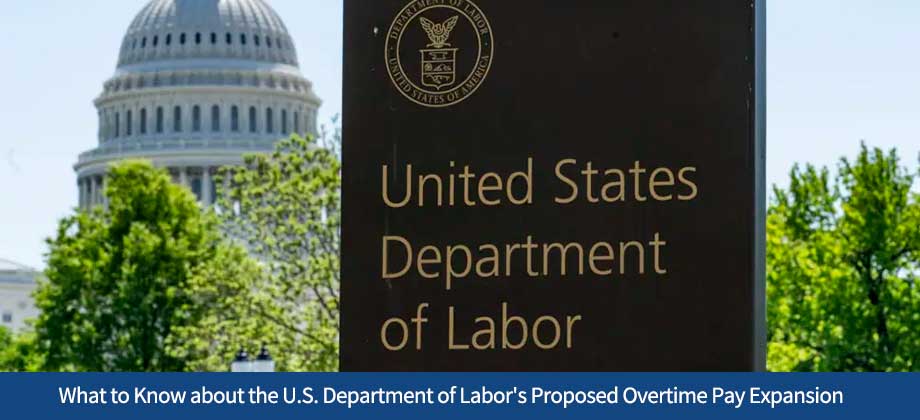What to Know about the U.S. Department of Labor’s Proposed Overtime Pay Expansion

Workers’ rights have been top-of-mind for a while now, and the U.S. Department of Labor (DOL) seems to be taking notice—at least in the small business space. In a significant move aimed at bolstering these rights and providing economic security, the agency has proposed a rule to increase the salary threshold for overtime pay eligibility. If implemented, this change would make millions of previously exempt salaried employees eligible for overtime pay. According to the department website, the proposed rule would ensure overtime pay for most salaried workers earning less than $1,059 per week, or about $55,000 per year (it currently sits at $38,568). With the cost of living having risen significantly over the last few years, this ruling would help bring wages in line with the higher price of simply living in the United States. If implemented, these new regulations would make it so 3.6 million more salaried employees are eligible for overtime pay.
The Fair Labor Standards Act (FLSA) governs the federal overtime provisions, which mandate that employees be paid at a rate of at least 1.5 times their regular hourly wage for hours worked beyond the standard 40-hour workweek. However, certain “exempt” employees are not eligible for overtime pay, mostly because of their salary levels and job duties.
The Existing Salary Threshold vs. the Proposed Increase
In order to be exempt from overtime pay today, an employee must meet the salary threshold set by the DOL, which is $38,568 annually (or $684 per week). This threshold was last updated in 2019. A lot has changed since then. Under the new DOL proposal, the aim is to raise the threshold to $55,068 annually (or $1,057 per week). This number is based on an analysis of wage growth and economic factors since the last adjustment, which indicates that the existing threshold has not kept pace with inflation. Remember when inflation hit 9 percent in the summer of 2022? Those were nearly impossible times for low-wage workers.
The Potential Impact
Beyond the expanded overtime eligibility that would bring additional pay to an estimated 3.6 million workers, this proposal also has the potential to provide massive economic benefits to workers whose salaries fall within the revised range. It would offer greater financial stability and security, especially for those struggling to make ends meet on their current paychecks. It may also entice employers to manage their staff’s workloads better to avoid having folks work more hours, which in turn leads to increases in job satisfaction. While it’s all rosy for the workers, there are the increased labor costs that small business (especially those in the restaurant industry) will need to address. If implemented, it’s important that business owners carefully review these changes and do a risk assessment on potential impacts to your bottom line. There is a broader effort to make sure labor practices are fair and workers’ rights are upheld; this overtime pay expansion should encourage businesses to classify their workers appropriately and pay them for the hours they work.
The U.S. Department of Labor’s proposal reflects a proactive step towards supporting American workers and promoting economic fairness. By potentially expanding overtime eligibility to millions of everyday workers, this proposal addresses the need for an updated threshold that accounts for the cost of living—which, as we know, increases every year with little relief from employers. Yes, this will likely present some complications for small businesses; however, we are all better off when the American workforce is financially secure.
Stick with the Financial Pantry for more news and updates regarding the nation’s latest restaurant industry trends. And if you’re in the market for an unsecured small business loan, look no further than the experts at ARF Financial—we’re ready to help you fund the success of your business!

